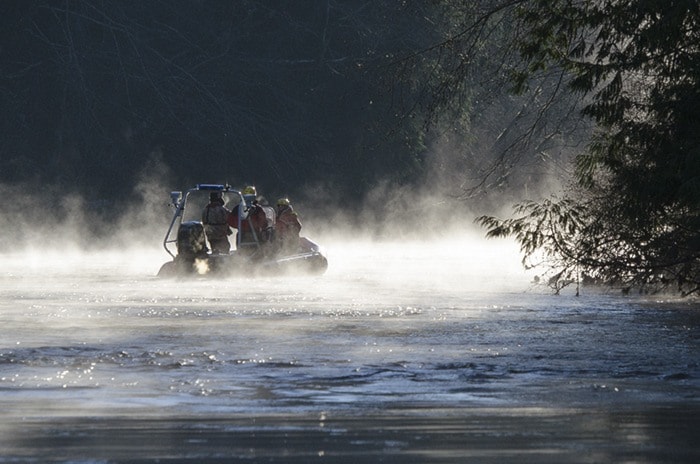Lake Cowichan council recently received a presentation from the Cowichan Watershed Board regarding the challenge of water conservation in the region.
The presentation came at July’s Public Works Committee meeting after recent news of worryingly low water levels in the Cowichan River.
“Water sustainability is a key part to the puzzle in the Cowichan Valley,” said David Slade from the Cowichan Watershed Board at the meeting. We have goals to reduce water consumption and we must conserve. Why? So we are prepared for future growth and for the sake of local food security. If we are going to use more water, we are going to have to take it from somewhere. It costs money to treat and dispose of water and it’s good to save money. Around 15 to 70 per cent of municipal water use is wasted through leaks. Metering is important, tiered pricing is important and the people who consume less should be rewarded.”
Water metres are currently in effect in the Town of Lake Cowichan.
Each residential household gets 35 cubic metres of water (35,000 litres) a month for single family dwellings. Town houses get 30 and apartments get 25 and you are billed $1.31 for every cubic metre you go over.
The river flow in the Cowichan River right now, controlled by Lake Cowichan’s weir, has recently been as low as five cubic metres per second and Rodger Hunter from the watershed board confirmed to council that discussions are ongoing to turn it down to four and a half so there is enough water around for the salmon run this fall.
“We have a drought situation,” said Hunter. “We know the streams are drying up around here. It’s a really serious situation. Catalyst are going to put webcams at the pumping station and the weir so people can see what the water levels are.”
Slade said Catalyst is on high alert of the situation.
“Catalyst is engaging its entire workforce on ways to reduce the water intake,” said Slade who is encouraging council to do the same with residents of the town. “The goal is to match or beat the Town of Ladysmith where 246 litres of water is used per person per day. The average in Canada is over 300. From 2003 to 2013, Ladysmith reduced its water consumption by 25 per cent despite a 20 per cent increase in population.
“We know the summer inflow of water into the Cowichan Watershed is 30 per cent less than what it was 30 years ago. Twice in the last 10 years we have needed to take the salmon and it looks like we are going to have to do that again this year, unless something changes dramatically.
“Ladysmith also bills four times a year so people know what’s going on better. Around 42 per cent of people in Lake Cowichan don’t know where their water comes from so there is a lot of ignorance out there.”
As the town looks at ways to engage the community on water consumption and how to improve it, Coun. Bob Day asked Slade if the town is allowed “to come up with its own game plan” or whether that would be dictated by others.
“Absolutely you can,” said Slade in response to Day. “If you’ve got a leak in your house, that’s 5,000 litres of water a day going to waste.”
